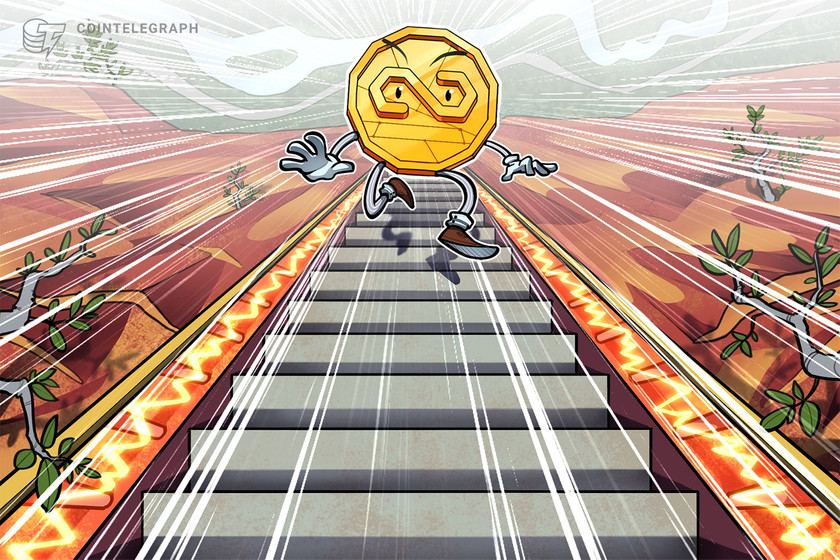Tether vs. USD Coin on-chain data reveals two very different stablecoins


The market cap of Tether dropped amid the FTX fiasco while USD Coin supply increased by $2 billion.
USD Coin (USDC), a stablecoin issued by the U.S.-based Circle Financials Ltd, is taking the lead over its top rival, Tether (USDT), when it comes to institutional adoption, according to on-chain data.
USDC daily transfer volumes are higher
The market capitalization of USDC tokens in circulation comes to be around $44 billion versus USDT’s $65.42 billion. However, USDC’s daily transfer value on the Ethereum blockchain has been consistently higher than USDT throughout 2022, data from Glassnode shows.
For instance, as of Nov. 22, the USDC daily transfer was around $14 billion compared to USDT’s $5 billion.


In other words, USDC users engage in relatively higher capital transfers compared to USDT users, suggesting that USDC is increasingly the stablecoin of choice among high net-worth entities including institutional whales, hedge funds, family offices, crypto exchanges, etc.
Related: 82% of Tether reserves held in ‘extremely liquid’ assets, according to attestation
Furthermore, USDC leads USDT in terms of its supply weight across smart contracts as of Nov. 22. Notably, the former made up 33.75% of the total stablecoin supply locked across staking pools. In comparison, USDT’s supply is around 12.50%.


But the higher daily transaction count versus USDC suggests that Tether is more likely used for retail trading and transfers such as remittances.


On the other hand, USDC appears like a top stablecoin choice for tech-savvy institutional traders that lock their funds in staking contracts to earn yield.
This is further reflected in USDC’s lower daily active addresses count of 40,245 versus USDT’s 73,000, as recorded on Nov. 21.


Additionally, crypto trading platforms implementing so-called “proof-of-reserves” after the FTX collapse appear to hold more Tether over the USD Coin, further signaling that USDT is likely more popular among retail traders.
These exchanges include Binance, KuCoin, BitFinex, ByBit, OKEx, and Huobi. Crypto.com’s reserves are the exception with more USDC than USDT.


Tether market cap dips after FTX collapse
The market capitalization of USDT dropped by nearly $4 billion after the FTX exchange collapse nearly two weeks ago.
The reason may be due to Tether briefly veering off from its $1 valuation, hitting 96 cents on Nov. 10, after it froze $46 million worth of USDT tokens associated with FTX.
Interestingly, the USDC market cap rose by nearly $2 billion after Nov. 10 when the FTX fiasco began.


Tether has a history of breaking its dollar peg during extreme market stress albeit to a lesser degree in recent years.
For instance, the token dropped below 95 cents during the crypto market selloff in May, coinciding with a spike in USDC’s market cap. This suggests that some investors moved their capital from Tether to USD Coin as the former lost its dollar peg, as shown below.


However, Tether returned to dollar parity within a few days, asserting that the tokens in circulation are backed 100% by reserves and pegged 1-to-1 with dollars.
This article does not contain investment advice or recommendations. Every investment and trading move involves risk, and readers should conduct their own research when making a decision.






















